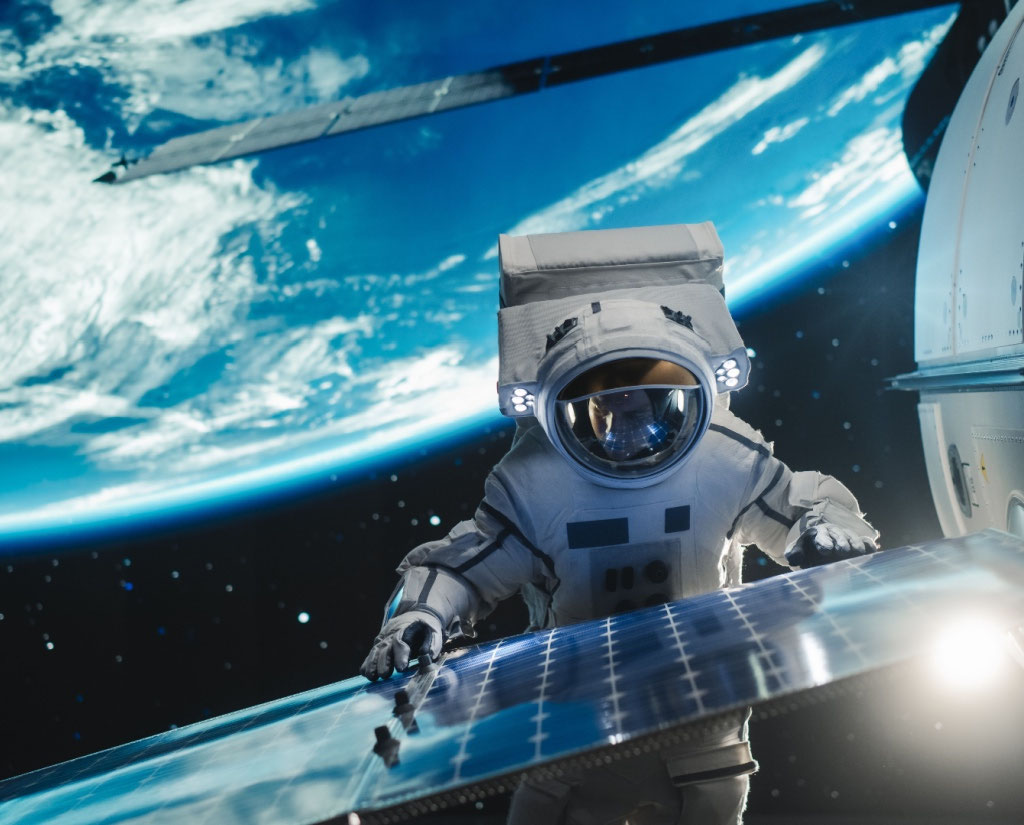
Why would you ever need to know? Because of the Space Poop Challenge, that’s why. It’s a $30,000 incentive prize for a NASA-worthy system for spacesuits that routes human waste away from the body, hands-free. It could be the difference between life and death for astronauts in emergency situations that require extended (like days) periods of time spent contained to their spacesuit. Check out the challenge guidelines to learn more about the details of this challenge, and read on for some interesting factoids about dealing with bodily functions in space.
Space is an extreme and unsafe environment even before you consider the issue of, um, using the bathroom. But that’s just it -- we have to consider that issue. So before you go running off to make space travel history by drumming up new solutions, let’s talk about the current situation in space.
There are two space-age toilets on the ISS, located in the Tranquility and Zvezda modules. The second commode was put in just a few years ago, after the first unit was having some problems. Effectively managing human waste is critical for the health and safety of astronauts in space.
Our terrestrial toilets use gravity to flush everything away, but doing your business in the weightlessness of outer space gets tricky.
So, how exactly does one go number one, or number two, in space?
The Amazing Zero-G John
The toilets on the ISS are so different from yours, astronauts actually need some supplemental potty training to figure them out. And they're astronauts.
Without getting into the nitty-gritty, let’s just say that relieving oneself in space these days is a lot better than it used to be. Today, going to the restroom in zero-g is a quick process, but it looks more complicated than using a car. Luckily, they get to practice on training toilets before blastoff (pun intended).
There seem to be a lot of steps involved, so you probably don't want to be in a hurry. Liquid and solid waste are handled differently: there's a somewhat normal-looking toilet seat, along with what's known as a “urine hose.”
The hole in the toilet seat is smaller than usual, so apparently, it can be a bit tough to get the alignment right at first. Women and men are equal here when it comes to number two, using the same setup, but urinating requires different … attachments.
Space toilets use suction instead of gravity, for both urine and solid waste. You don't really sit in space, because you don't weight anything, so astronauts need to either strap themselves in or use handles to hold themselves down.
You can actually check out a guided tour of the toilet cabin on the ISS, given by Italian astronaut Samantha Cristoforetti:
Out of Sight, Out of Mind?
On Earth, we get to flush our waste away and never see it again (unless something goes horribly wrong). But on the ISS, it's not that simple.
Urine and solid waste are collected and dealt with separately. Urine and other waste water goes through a very advanced filtration and purification process, before it ends up being used again for - you guessed it - drinking water. In case you needed more proof, the space program really isn’t for the faint of heart. Think you could swing it? Before you answer, you should also know that the water they end up drinking is actually purer than the water most of us drink on a daily basis. I guess that's worth the view.
Solid waste ends up getting packed up, compressed and sent off to burn up in the atmosphere like a shooting star. Make a wish!
Astronauts try to take care of all their business on the space station, rather than in their spacesuits. But when nature calls on a spacewalk, they have to use the equivalent of an adult diaper for space travelers.
Wearing a diaper is a reasonable solution for short term waste management for launch, reentry, and spacewalks, but future long distance missions might require astronauts to remain in a protective suit for up to 6 days. That’s a long time no matter how you slice it, and a diaper is simply not a safe or sustainable waste management tool. NASA is working on this challenge themselves, but as we prepare our species for interplanetary travel, they could use some help from the crowd with these kinds of details!
The Space Poop Challenge
As hard as it is for astronauts to use the toilet in the pressurized environments like ISS, it is an even bigger challenge when you have to wear a spacesuit (particularly if you have to wear it for more than a few hours), This is why the Space Poop Challenge is offering up to $30,000 for the best ideas to create a system that will collect waste and route it away from an astronaut's body, hands-free, while wearing a spacesuit. Check out the Space Poop Challenge page to learn more, get registered, and take your place in the annals of space travel history!







